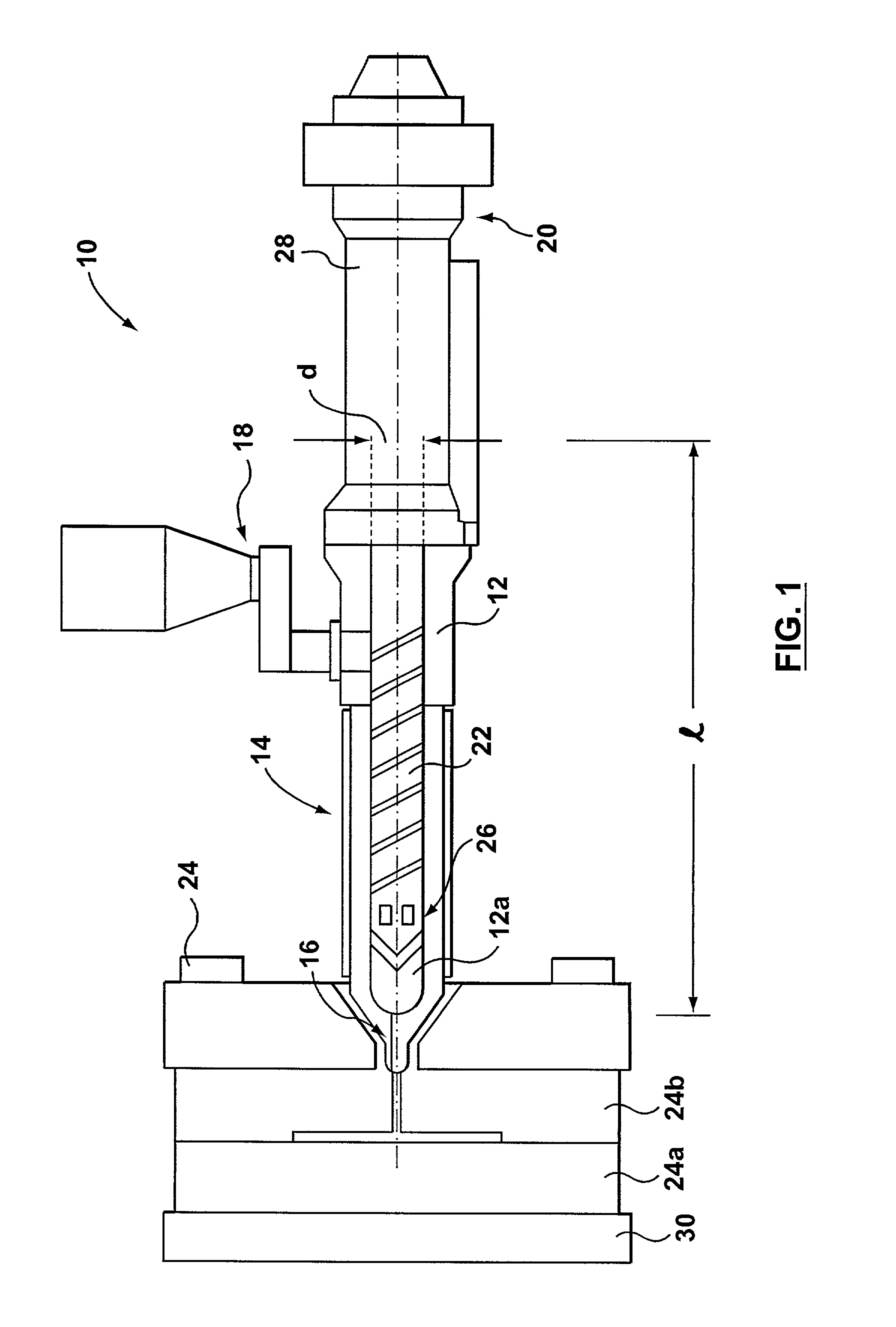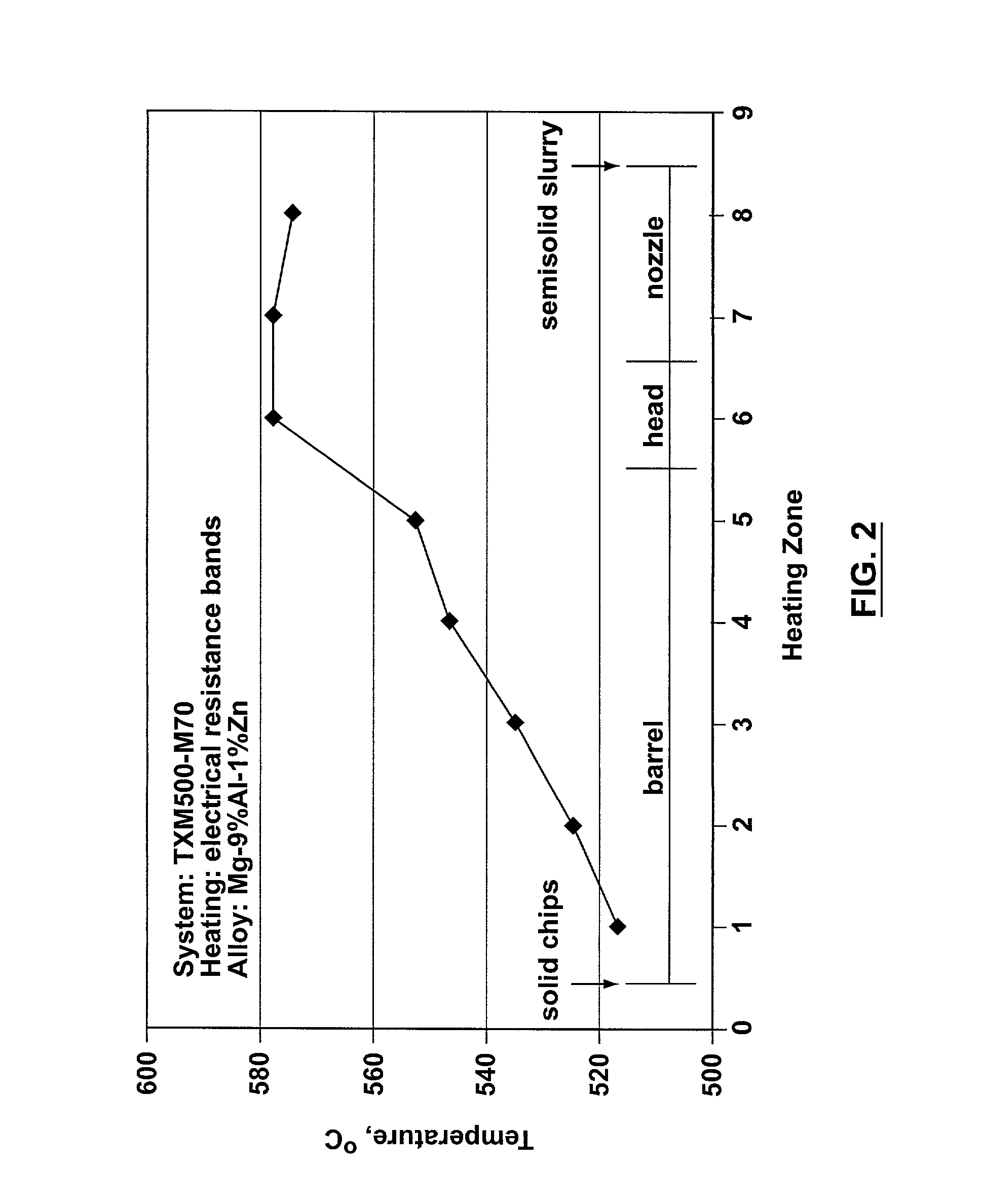Process for injection molding semi-solid alloys
a technology of semi-solid alloys and injection molding, which is applied in the direction of metal founding, chemical apparatus and processes, etc., can solve the problems of degradation of processing yield, inferior product, and mechanical properties of molded articles, and achieves low porosity, less energy, and high quality articles
- Summary
- Abstract
- Description
- Claims
- Application Information
AI Technical Summary
Benefits of technology
Problems solved by technology
Method used
Image
Examples
example 2
[0052] EXAMPLE 2 Under the same conditions as Example 1, but with a 50% reduction in the screw velocity (1.4 m / s), corresponding to a gate velocity of 24.32 m / s and a mold-filling time of 50 ms, premature solidification prevented the alloy slurry from completely filling the mold cavity. The weight of the molded article was 90% of that the fully molded article of Example 1. The majority of the unfilled areas was found to be situated at the outer edges of the article. A partial filling of the mold cavity revealed that the flow front improved in comparison with that of Example 1, but still was non-uniform and not completely laminar. This is especially evident in thin-walled regions, where local flow fronts moving from thicker regions solidified instantly after contacting the mold surface. Unexpectedly, despite the reduction in turbulence, the internal porosity of fully molded parts was higher than that measured for Example 1, and had an unacceptably high value of 5.3%. The results of t...
PUM
| Property | Measurement | Unit |
|---|---|---|
| velocity | aaaaa | aaaaa |
| velocity | aaaaa | aaaaa |
| porosity | aaaaa | aaaaa |
Abstract
Description
Claims
Application Information
 Login to View More
Login to View More - R&D
- Intellectual Property
- Life Sciences
- Materials
- Tech Scout
- Unparalleled Data Quality
- Higher Quality Content
- 60% Fewer Hallucinations
Browse by: Latest US Patents, China's latest patents, Technical Efficacy Thesaurus, Application Domain, Technology Topic, Popular Technical Reports.
© 2025 PatSnap. All rights reserved.Legal|Privacy policy|Modern Slavery Act Transparency Statement|Sitemap|About US| Contact US: help@patsnap.com



